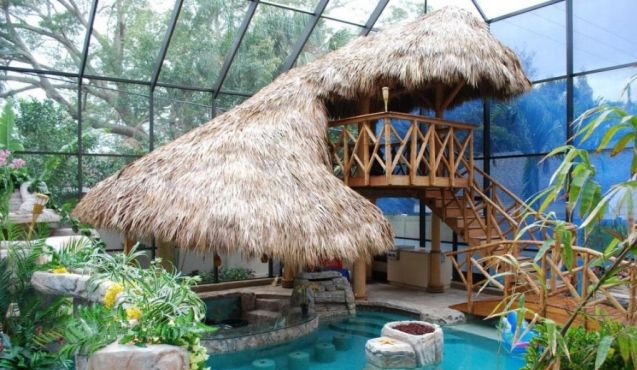
7 Best Designs for Kids Bedroom | Creative Ideas 2025
Designing a kids’ bedroom is an exciting venture that combines creativity with functionality. A well-thought-out room design can inspire imaginative play while providing a comfortable retreat for rest and study.
With the trends for 2025 rapidly evolving, this article will explore the top seven design ideas that cater to the unique needs of children, ensuring both style and practicality. From playful themes to serene minimalism, these designs focus on creating a space where little ones can thrive.
Creating a Fun and Functional Kids Bedroom
When it comes to kids’ room design, the goal is to create a space that is both fun and functional. Kids often need a variety of areas for sleeping, playing, and learning, which requires careful planning of the room’s layout.
Utilizing multi-functional furniture, such as bunk beds with storage or a daybed that doubles as a play area, maximizes the space available. Additionally, incorporating bright colors and playful decor can stimulate creativity and energetic play. Ultimately, the design should reflect the child’s personality while accommodating their growing needs.
Why Bedroom Design Matters for Kids’ Growth and Comfort
Bedroom design plays a vital role in a child’s development and overall comfort. A well-designed room can enhance a child’s sense of security and inspire creativity. For instance, a cozy nook filled with stuffed animals and cushions can provide a perfect reading retreat, while colorful wall art can stimulate imagination.
Furthermore, a serene space with calming colors and textures encourages relaxation and better sleep. In essence, thoughtful design choices can foster an environment conducive to both play and rest, ensuring a well-rounded growth experience for kids.
2025 Trends in Kids’ Bedroom Design
The interior design landscape is evolving, and 2025 is set to bring exciting trends in kids’ bedroom decor. From eco-friendly materials to tech-savvy solutions, the focus is on creating spaces that are not only stylish but also sustainable.
Incorporating elements like pastel wallpapers, interactive learning stations, and personalized decor can make a child’s room feel unique and tailored to their interests. As trends shift towards more inclusive and adaptable designs, parents are encouraged to embrace creativity and flexibility in their choices for kids’ room ideas.
1. Themed Adventure Rooms: Bringing Imagination to Life
Space Exploration Themes for Young Astronauts
For young space enthusiasts, a themed adventure room centered around space exploration can ignite their imagination. Incorporating elements like a mural of planets on the walls, starry ceiling decals, and bedding featuring rockets creates an immersive experience.
A cozy reading nook with a telescope encourages stargazing and learning about the universe. This design not only transforms the room into a galactic retreat but also fosters curiosity about science and space. With the right decor, young astronauts can dream big and reach for the stars every day.
Superhero or Fantasy World Inspirations
Superhero and fantasy-themed rooms are incredibly popular among kids who love adventure and storytelling. By using vibrant wall art featuring their favorite characters, along with bedding and cushions that reflect heroic motifs, you can create a dynamic environment.
Adding a play area with costumes and props allows for imaginative play while keeping the decor cohesive. This design approach not only makes the room visually striking but also encourages children to explore their creativity through role-play and storytelling.
Princess, Pirate, and Fairy Tale Themes
Transforming a bedroom into a whimsical kingdom or pirate ship can create a magical haven for children. A princess-themed room might feature pastel colors, elegant furniture, and a canopy bed adorned with fairy lights.
Alternatively, a pirate-themed design could incorporate nautical elements, treasure maps, and bold colors. These themed rooms spark a child’s imagination, allowing them to immerse themselves in their favorite stories. By integrating playful design elements, the bedroom becomes a stage for adventures, fostering creativity and joyful play every day.
2. Scandinavian Minimalism: Peaceful & Practical Spaces
Neutral Color Palettes and Natural Materials
Scandinavian minimalism emphasizes serene design through neutral color palettes and natural materials, making it perfect for a kids’ room. Soft whites, greys, and pastels create a calming atmosphere, while wooden furniture adds warmth and functionality.
By choosing simple yet stylish decor, parents can ensure the room remains clutter-free and inviting. This approach not only allows for easy maintenance but also provides a peaceful retreat for kids, promoting relaxation and focus. In a world full of distractions, a minimalist room can serve as a calming oasis.
Multi-Functional Furniture for Smart Storage Solutions
Incorporating multi-functional furniture is key to achieving a practical Scandinavian kids’ room. Pieces such as a bunk bed with built-in storage or a daybed that can convert into a reading nook maximize space efficiency. Creative storage solutions like baskets and stylish bookshelves keep the room organized while allowing for easy access to toys and books.
This design element ensures that the room remains tidy, providing children with a serene environment conducive to relaxation and play. Smart storage fosters independence, allowing kids to manage their space as they grow.
Creating Calm with Simple Designs and Soft Textures
To create a serene ambiance in a kids’ bedroom, focusing on simple designs and soft textures is essential. Incorporating plush rugs, comfortable cushions, and soft bedding can enhance the room’s coziness and inviting feel. Soft fabrics and muted colors contribute to a sense of calm, making it easier for children to unwind after a busy day.
This design approach promotes restful sleep and relaxation, essential for healthy development. By fostering a tranquil environment, parents can help their children cultivate a love for their personal spaces.
3. Interactive Learning and Play Zones
Chalkboard Walls for Creative Expression
Chalkboard walls have emerged as a fantastic way to encourage creative expression in kids’ bedrooms. These walls serve as a canvas for drawing, writing, and brainstorming, allowing children to explore their artistic talents. By designating one wall as a chalkboard, kids can freely express their ideas and showcase their creativity.
This interactive element not only adds a fun aspect to room decor but also promotes learning and development through play. With chalkboard walls, the possibilities for creativity are endless, making the room a dynamic space for exploration.
Activity Areas for Building, Art, and Reading
Designing dedicated activity areas within the kids’ room enhances their learning and play experiences. Creating zones for building with blocks, engaging in arts and crafts, or enjoying quiet reading time fosters a well-rounded environment. For instance, a small table for art projects and a cozy reading nook filled with books and cushions can cater to various interests.
This thoughtful layout encourages kids to engage in diverse activities, promoting creativity and cognitive development. A room designed with activity areas inspires children to explore their hobbies and passions.
Indoor Play Spaces: Climbing Walls and Playhouses
Indoor play spaces, such as climbing walls or playhouses, can turn a kids’ bedroom into an adventure hub. Climbing walls provide a fun and active way to develop motor skills, while playhouses can serve as imaginative retreat spaces.
By incorporating these elements, parents create a room that encourages physical activity and imaginative play. These interactive features not only keep children engaged but also foster a sense of independence and confidence as they navigate their environments. Indoor play spaces transform the bedroom into a vibrant playground.
4. Sustainable & Eco-Friendly Kids Bedrooms
Using Natural, Non-Toxic Materials
Creating a sustainable kids’ bedroom involves careful selection of natural, non-toxic materials that prioritize health and safety. By choosing organic bedding, non-toxic paints, and sustainably sourced furniture, parents can create a safe space for their little ones.
These materials contribute to a healthier indoor environment, reducing exposure to harmful chemicals. An eco-friendly room not only promotes well-being but also instills values of sustainability in children, encouraging them to care for the planet. Prioritizing natural materials helps create a nurturing sanctuary for kids.
Creating a Green Bedroom with Indoor Plants
Integrating indoor plants into a kids’ bedroom design adds a touch of nature while improving air quality. Plants like snake plants or spider plants are easy to care for and bring vibrant colors to the decor.
Teaching children to care for plants can instill a sense of responsibility and a connection to nature. A green bedroom promotes a calming atmosphere, encouraging relaxation and creativity. Balancing playful decor with the tranquility of plants enhances the room’s aesthetic while fostering a love for the environment.
Sustainable Furniture: From Recycled Wood to Upcycled Pieces
Opting for sustainable furniture is a key element in creating an eco-friendly kids’ room. Utilizing pieces made from recycled wood or upcycled materials ensures that the room is both stylish and environmentally conscious.
These unique furnishings often add character and history to the decor, making the room feel special and personalized. By choosing sustainable options, parents can create a bedroom that not only looks great but also reflects their commitment to a greener future. Sustainable furniture embodies creativity and responsibility, setting a positive example for kids.
5. Personalized Bedrooms: Reflecting Your Child’s Personality
Custom Wall Art and Name Signs
Personalizing a child’s bedroom with custom wall art and name signs creates a space that truly reflects their personality. Incorporating art that resonates with their interests or hobbies can make the room feel special and unique.
Name signs, whether handmade or professionally crafted, add a personal touch that makes the space feel more like theirs. By embracing individuality in decor, parents can foster a sense of belonging and pride in their child’s room, encouraging them to express themselves creatively through their surroundings.
Choosing Personalized Bedding, Pillows, and Rugs
Personalized bedding, pillows, and rugs can significantly enhance a child’s bedroom, making it feel inviting and tailored to their tastes. Custom designs featuring favorite colors, characters, or themes create a cohesive look that resonates with the child.
This attention to detail not only elevates the room’s decor but also encourages kids to take ownership of their space. By selecting items that reflect their personality, parents can create a warm and welcoming environment where children can thrive and feel comfortable.
Displaying Artwork, Achievements, and Hobbies
Encouraging children to display their artwork, achievements, and hobbies in their bedroom fosters pride and self-expression. Creating a gallery wall or a dedicated space for showcasing their creations can transform the room into a personal showcase.
This not only adds to the room decor but also boosts children’s confidence as they see their efforts recognized. By making space for their passions and accomplishments, parents nurture a sense of identity and belonging that can positively impact their child’s overall development.
6. Vintage-Inspired Bedrooms: Charm Meets Functionality
Retro Color Schemes and Furniture for Timeless Style
Vintage-inspired bedrooms offer a charming blend of nostalgia and functionality that appeals to both kids and parents. Retro color schemes, such as pastel pinks and blues, combined with classic furniture pieces, create a timeless aesthetic.
Incorporating vintage decor elements, like an antique dresser or a retro lamp, adds character and warmth to the room. This design approach not only creates a stylish atmosphere but also encourages children to appreciate the beauty of history and craftsmanship. With vintage charm, the bedroom becomes a stylish retreat for little ones.
Integrating Nostalgic Patterns and Textures
Nostalgic patterns and textures, such as floral wallpapers or polka dot bedding, can create a cozy and inviting atmosphere in a vintage-inspired kids’ room. These design elements evoke a sense of warmth and familiarity that children can connect with.
Mixing different textures, such as soft rugs, plush cushions, and vintage quilts, enhances the room’s aesthetic while providing comfort. This approach allows for a playful yet chic decor style that sparks creativity and imagination. A vintage-inspired room is not just stylish; it also offers a comforting retreat for kids.
Mixing Old-World Charm with Modern Functionality
Combining old-world charm with modern functionality is key to creating a vintage-inspired kids’ bedroom. Utilizing contemporary furniture alongside classic pieces ensures that the room remains practical for daily use. Smart storage solutions, such as vintage trunks or stylish baskets, can keep the space organized while adding to the decor.
This design approach creates a harmonious balance between style and function, allowing children to enjoy both the aesthetic and practicality of their space. By merging vintage and modern elements, parents create a unique and inviting environment.
7. High-Tech Rooms: Smart Design for Future-Ready Kids
Integrating Smart Lighting and Voice-Controlled Devices
Incorporating smart lighting and voice-controlled devices into a kids’ room design creates a futuristic and interactive environment. Smart lighting systems can adjust brightness and color to match the child’s mood or activity, enhancing the overall experience.
Voice-controlled devices allow children to manage music, alarms, and even bedtime stories with ease, making their room more functional and engaging. This tech-savvy approach not only prepares kids for the future but also adds a layer of convenience to their daily routines, making their bedroom a truly modern retreat.
Tech-Enhanced Furniture and Learning Tools
Tech-enhanced furniture, such as desks with built-in charging stations or interactive study tools, transforms the kids’ room into a hub for learning and creativity. By integrating technology into everyday furniture, parents can encourage children to engage with their studies in an innovative way.
This design approach combines functionality with modern aesthetics, ensuring that the room remains stylish while catering to educational needs. As technology continues to play a crucial role in learning, equipping kids’ rooms with the right tools supports their growth and curiosity.
Interactive Learning and Play with Augmented Reality
Augmented reality (AR) can revolutionize the way children learn and play in their bedrooms. By incorporating AR apps and devices, parents can create an interactive environment that engages kids in educational content while making playtime more exciting.
For instance, AR can be used to bring stories to life or enhance learning experiences in subjects like science and math. This innovative approach to room design fosters a love for learning and creativity, ensuring that children are not only entertained but also intellectually stimulated. With interactive learning, the bedroom becomes a space for exploration and discovery.
Conclusion:
Designing a Kids Bedroom for 2025 and Beyond
As we look toward 2025 and beyond, the importance of thoughtful design in kids’ bedrooms cannot be overstated. Creating spaces that are both functional and inspiring is essential for nurturing creativity and comfort.
By embracing trends that focus on sustainability, personalization, and technology, parents can create environments that adapt to their children’s changing needs. Such designs will foster growth, imagination, and a love for their personal spaces.
Balancing Creativity with Practical Needs
Finding the right balance between creativity and practical needs is crucial when designing a kids’ bedroom. While it’s important to create an inspiring and engaging environment, functionality should not be compromised.
Multi-functional furniture, smart storage solutions, and adaptable layouts ensure that the room meets the demands of everyday life. This balance allows children to thrive in a space that is both playful and practical, accommodating their evolving interests and requirements as they grow.
How to Adapt Designs as Your Child Grows
Adapting designs as your child grows is essential for maintaining a relevant and engaging space. As children transition through different stages of life, their interests and needs will change. Parents can incorporate removable decor, versatile furniture, and flexible layouts that can evolve with their child’s personality.
By being open to modifying the bedroom, parents can create a lasting environment that continues to inspire creativity and comfort, ensuring that the room remains a cherished retreat throughout their childhood.
















